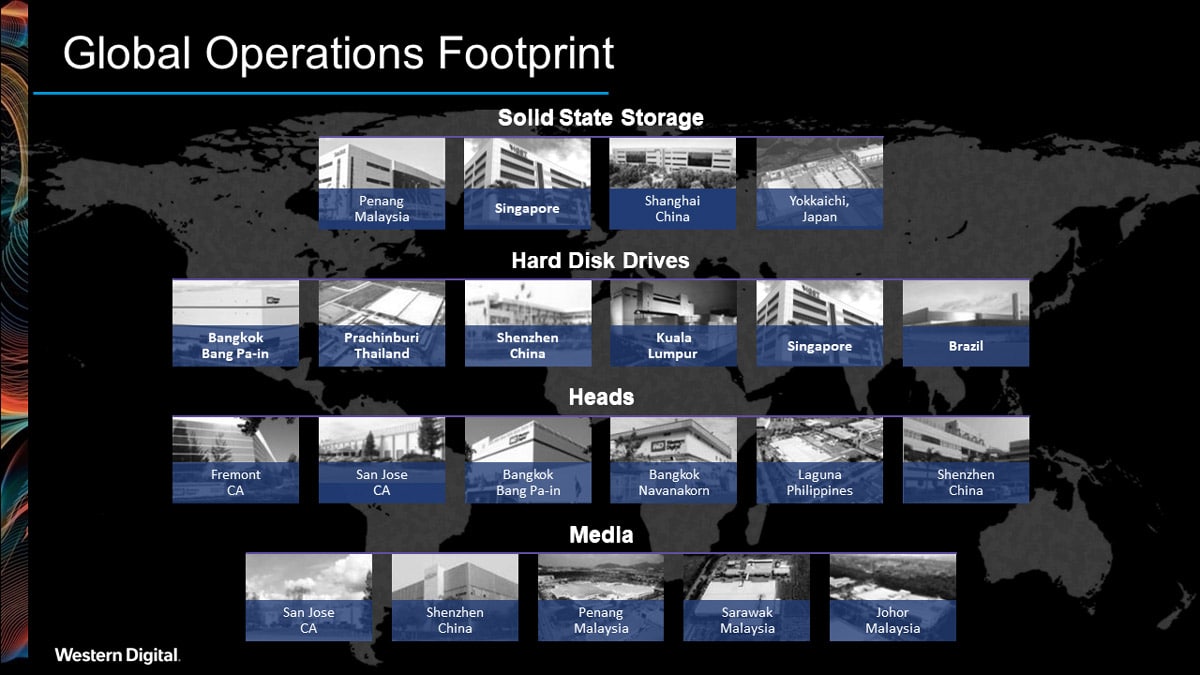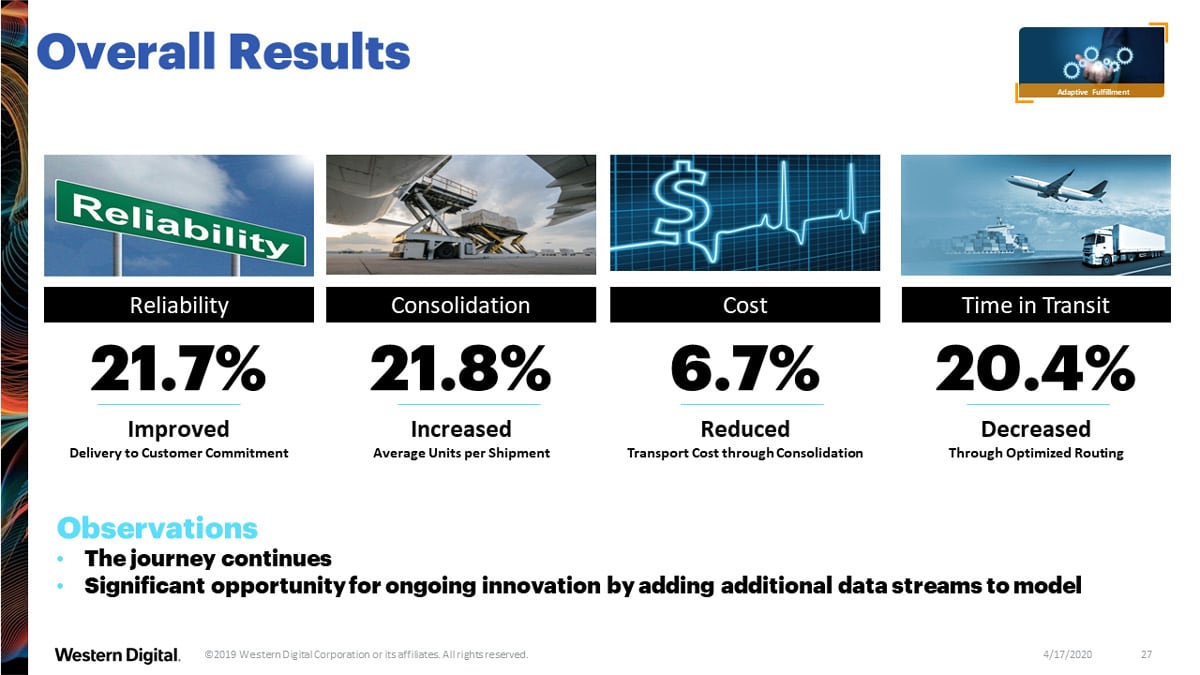From responsible sourcing to efficient shipping, our logistics team is working towards minimizing our impact on the environment. In fact, we were named first in the HDD manufacturing industry and fourth in the overall computer hardware industry in Responsible Sourcing Network’s 2019 Mining the Disclosures Report1. In this blog post, I’ll take you through what our global supply chain looks like today, and where we aim to take it in the coming years.
Manufacturing Storage from Asia to the Americas
Our manufacturing network spans nearly a dozen factories across Asia, North America, and South America. Each factory is part of a set that produces specific components for our hard disk drives and flash media. These include controllers, firmware, heads, and media that are assembled in our data storage devices and platforms. It’s incredibly complex to manage these global manufacturing operations, which you can get a sense of in the below graphic.

We’ve been working to improve the areas that contribute most to Western Digital’s carbon footprint. In our case, international air freight has been one of the single largest contributors to emissions in our transportation network. This makes sense as we conduct business with our distributors, resellers, retailers, automotive, gaming, cloud, system integrators, and channel partners. Another big factor has been ocean freight shipping, due to the sheer volume of products being moved and slower travel time.
Reducing Our Global Carbon Footprint
International air freight is also the area where we have made the greatest improvement. Using an Adaptive Fulfillment Model, we’ve been able to reduce our global carbon footprint – in many cases, by double-digit percentages. This has meant fuller truckloads, shiploads, and air loads with fewer logistical miles traveled.

Another initiative, which has contributed significantly to our carbon emissions reduction, is our multi-modal logistics options in the Asia-Pacific region. We have expanded our intra-Asia trucking network, which allows us to use an emissions-friendly mode, as an alternative to air-freight.
Taking Paper Out of Our Global Supply Chain
Our next step is working on a paperless supply chain and phasing out our standard use of paper records. We’ve already digitized a meaningful portion of our logistics operations. Currently, our target is early 2021 to complete this transformation to a paperless supply chain. This includes a conceptual design with precursor initiatives, automatic document feeds from third-party providers, and mobile signature pads for drivers. Our internal team is hard at work designing, studying, and modeling what this shift could look like, and how many emissions could be reduced.
Sustainability Policy Making
Policy makers globally have looked at ways to address sustainability. In its report on the U.K., the Sustainable Governance Indicators 2019 highlighted plans to reduce plastics use, including a new plastics tax2. In the U.S., some policymakers propose to use the revenue resulting from a carbon tax to offset the greenhouse gas impact on climate, lower individual and corporate taxes, reduce the budget deficit, and invest in clean energy and climate adaptation3. And a growing list of cities and countries –accounting for nearly 17 percent of global GDP – around the world have pledged to achieve net-zero greenhouse gas emissions4.
We are committed to reducing our impact on the environment, while helping people gain greater value from their data. Communication with our suppliers and key stakeholders today sets us up for a socially responsible global supply chain down the road. It’s a long-term game; just ask Mother Nature.
See How Else We’re Staying Sustainable
Sources:
- Mining the Disclosures 2019: An Investor Guide to Conflict Minerals Reporting in Year Six. https://www.sourcingnetwork.org/mining-the-disclosures-2019
- United Kingdom Report – Sustainable Governance Indicators 2019. https://www.sgi-network.org/docs/2019/country/SGI2019_UK.pdf
- What is a carbon tax? | Tax Policy Center. https://www.taxpolicycenter.org/briefing-book/what-carbon-tax
- Here’s a list of countries committed to a net-zero emissions goal | World Economic Forum. https://www.weforum.org/agenda/2019/07/the-growing-list-of-countries-committing-to-a-net-zero-emissions-goal
